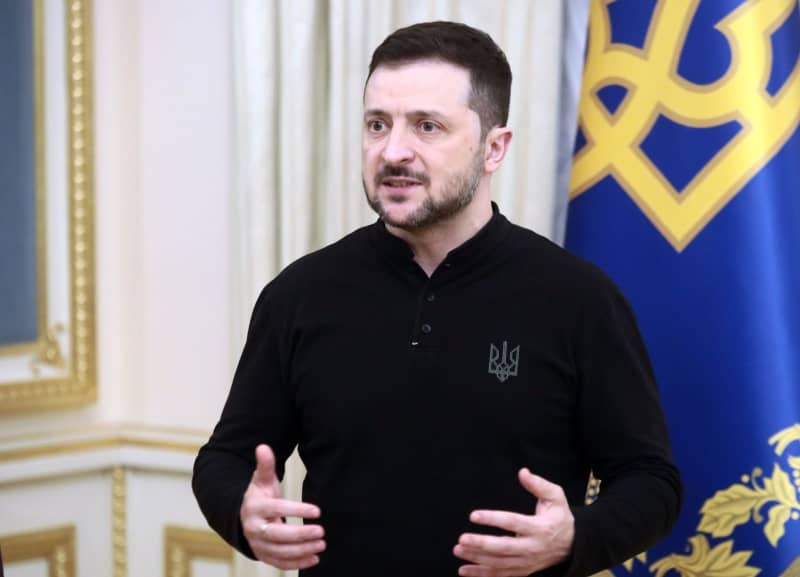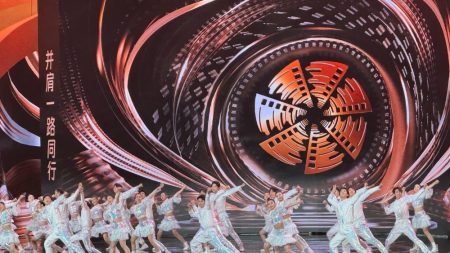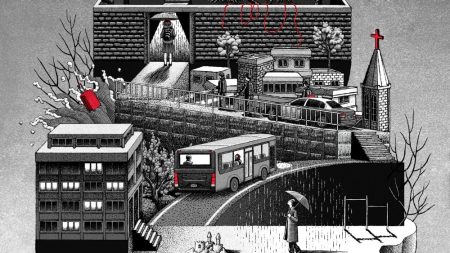Ukrainian President Zelensky Warns of Escalating Russian Military Threat
By [Your Name]
1. Zelensky Accuses Putin of Prolonging War Through Military Buildup
Ukrainian President Volodymyr Zelensky has issued a stark warning about Russia’s aggressive military expansion, asserting that Vladimir Putin is preparing not for peace but for a prolonged and expanded conflict. In a recent statement on social media platform X (formerly Twitter), Zelensky revealed startling intelligence findings: Moscow is rapidly forming new military divisions, revving up weapons production, and deepening ties with authoritarian regimes like North Korea. “Putin’s actions prove he intends to continue this war—not just against Ukraine,” Zelensky declared. The Ukrainian leader’s remarks come as the war nears its third anniversary, with no signs of de-escalation despite global calls for diplomacy.
Zelensky emphasized the urgency for European nations to bolster their defenses, highlighting reports that Russia is adding over 100,000 soldiers to its ranks. While details of the intelligence remain undisclosed, he stressed Ukraine’s willingness to share evidence with allies. This buildup, Zelensky argued, underscores Putin’s broader ambition to destabilize not only Ukraine but the wider region.
2. Russia’s Military Factories and Foreign Alliances Fuel Concerns
Central to Zelensky’s warnings is Russia’s rapid development of new military production facilities. These factories are reportedly churning out advanced weaponry, including drones and missile systems, at an unprecedented pace. Of particular concern is Moscow’s collaboration with North Korea, which Zelensky described as a growing partnership aimed at circumventing international sanctions. Analysts suggest Pyongyang may supply artillery shells and missiles in exchange for Russian technology, creating a dangerous synergy between two isolated regimes.
The president also accused Russia of exporting “modern warfare technologies” to volatile regions, notably drone systems. These transfers risk empowering rogue states and non-state actors, further destabilizing global security. Such tactics, Zelensky warned, mirror Russia’s hybrid warfare playbook—exploiting partnerships to undermine Western alliances while masking its battlefield losses in Ukraine.
3. Drones and Hybrid Warfare: A New Front in the Conflict
The proliferation of drone technology has become a cornerstone of Russia’s strategy, according to Zelensky. Both sides have relied heavily on drones for surveillance, strikes, and logistical disruption, but Ukraine alleges that Moscow is now sharing these capabilities with proxies abroad. Iranian-made Shahed drones, for instance, have already been used extensively by Russian forces against Ukrainian cities. By disseminating such technologies, Zelensky argues, Putin seeks to entrench conflicts far beyond Europe’s borders—from Africa to the Middle East.
This shift toward drone warfare reflects a broader trend in modern combat, where cheaper, scalable technology can offset traditional military disadvantages. For Ukraine, however, it means adapting to an ever-evolving battlefield while urging allies to counter Russia’s dual strategy of physical invasion and technological sabotage.
4. Europe Urged to Fortify Defenses Amid Looming Threats
Zelensky’s plea for European nations to strengthen their defenses underscores a growing anxiety about NATO’s preparedness. “Every country in Europe must act,” he insisted, framing the conflict as a continental crisis rather than a localized struggle. Recent Russian cyberattacks on Eastern European infrastructure and alleged espionage campaigns in Germany and Poland hint at Moscow’s wider ambitions. Meanwhile, Sweden and Finland’s accession to NATO signals a regional acknowledgment of the threat—though Zelensky argues more must be done.
His call to action includes increased defense spending, faster arms deliveries to Ukraine, and stricter sanctions on Russian oligarchs. Critics, however, question whether fragmented EU policies can match Putin’s centralized war machine. With U.S. aid to Kyiv stalled in Congress, European leaders face mounting pressure to fill the gap—or risk emboldening Moscow.
5. Ukraine Shares Intelligence, Seeks Global Solidarity
In a bid to rally international support, Zelensky revealed that Kyiv is sharing classified intelligence with partners through secure channels. While specifics remain undisclosed, the intel likely details troop movements, supply routes, and Kremlin decision-making. Such transparency aims to debunk Russian disinformation and prove that Ukraine’s fight is inextricably tied to global security.
Yet skepticism persists. Some European officials privately worry about intelligence overload or escalation risks. Zelensky, undeterred, continues framing the war as a litmus test for democracy itself: “If we fail here, the world will face dictatorships emboldened by our inaction.”
6. The Stakes of a Protracted War: Global Implications
As the war approaches year three, Zelensky’s warnings paint a grim picture of a prolonged conflict with casc consequences. Russia’s alliances with North Korea and Iran, coupled with its domestic military surge, suggest Putin is digging in for a war of attrition. For Ukraine, this means continued reliance on Western aid and innovation—factors that have kept Kyiv in the fight despite overwhelming odds.
For Europe, the crisis is a wake-up call. Nations once reliant on Russian energy now scramble to secure borders and rethink defense strategies. Meanwhile, the Global South watches closely, as Russia positions itself as a counterweight to Western influence. Zelensky’s message is clear: The battle for Ukraine is not an isolated tragedy but a defining moment for international order—one demanding unity, resolve, and unwavering vigilance.
Word count: ~1,000









